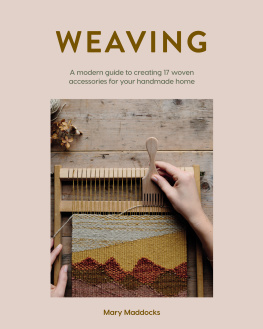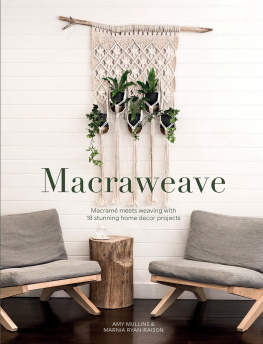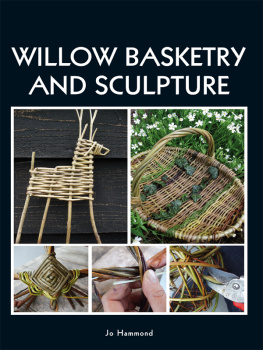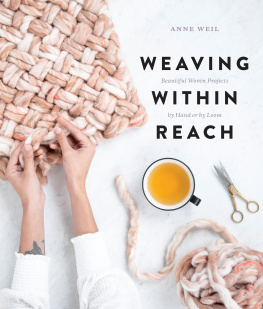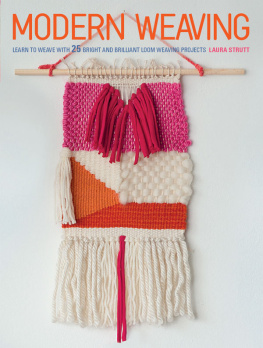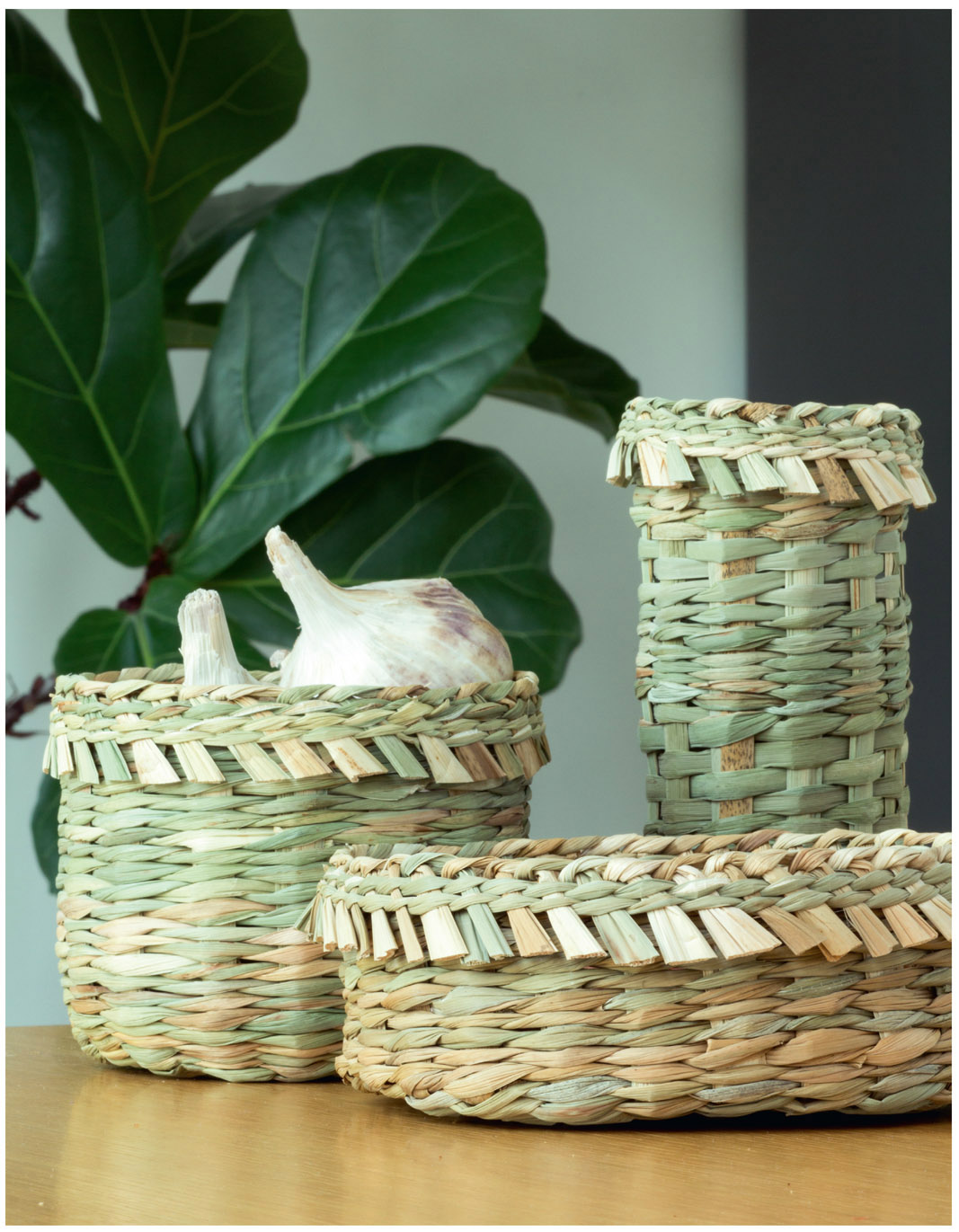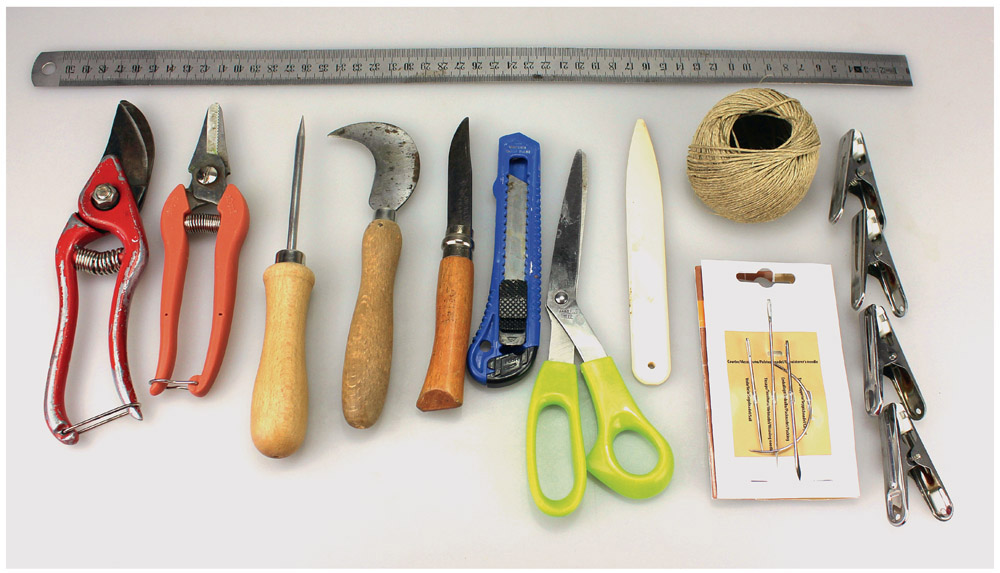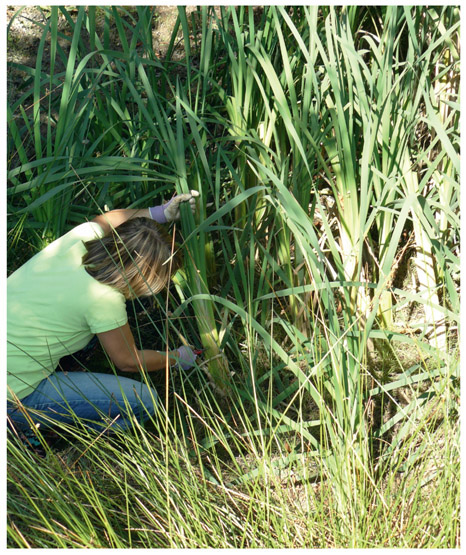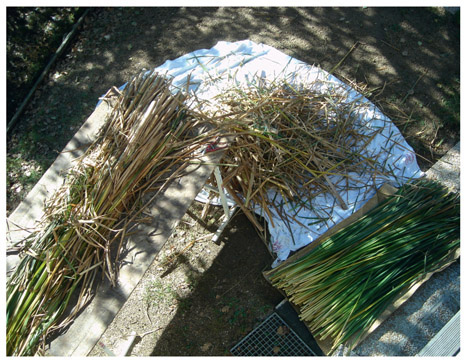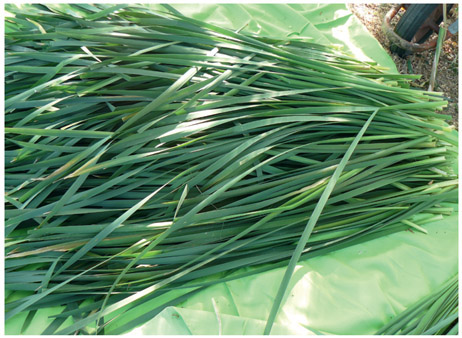Basket weaving has been a large part of my professional life for more than fifteen years. I am always looking for new techniques and new fibers.
My introduction to basket weaving with rattan led me to explore many aspects of weaving because of the multiple qualities of this fiber. It is pliable, thin, and easy to dye, and it takes little time and space to start using it. I wrote four books about these techniques (Vannerie en rotin, 2007; Vannerie daujourdhui, 2009; Vannerie papier et rotin, 2012; and Vannerie crative, 2017).
Basket weaving involves a group of techniquessome of which are very simple and others more sophisticatedthat use plant fibers, but also more unexpected materials such as plastic and paper. I shared my creative ideas in two booksco-vannerie (2013) and Vannerie dans tous ses tats (2015)and since 2012 I have been writing articles for the magazine Le lien cratif, the first French magazine on basket weaving.
My curiosity has made me interested in the environment around me. My garden has become my workshop, a new creative area that I shared in Vannerie tresse et corde au jardin (2016). In this book, Creative Basket Weaving, I highlight the use of cattail leaves, wicker, and the bark from willow and sweet chestnut in my creations.
I am so happy to be introducing children to this ancestral activity in schools. Basket weaving can also be a very good vehicle to wellness. With this in mind, I am responsible for teaching basket weaving to future occupational therapists at the ISTR in Lyon. Contact with these various audiences has given me a different, more complete approach to this technique.
I also organize workshops throughout the year in various locations (for associations, at retreats, for health professionals, at multimedia libraries, and so on). To see upcoming dates, go to .
To discover basket weaving in your own home, complete kits for children and adults are available on my website at www.vannerie-osier-rotin.com.
Sylvie Bgot
Several basket-weaving workshops have enabled me to enhance my work with new fibers and new techniques. Many thanks to artist and basket-maker Lois Walpole, with whom I was able to share and exchange ideas during a class, and who inspired the slippers found on page 71 of this book, freely adapted from one of her designs. I would also like to thank writer and farmer Bernard Bertrand, founder of Editions Terran, who helped me discover the world of making baskets from nature, and Michel Bonthoux, who is working on expanding the knowledge of cattail basketry in an association in the village of Jarrie, near Grenoble, and on which I loosely based the hat found on page 66.
Basket weavers are passers-on of their knowledge, and I am pleased to continue this tradition myself and to share with you my research and designs.
Nature makes available to us a multitude of fibers with basket-weaving properties. Experimenting with them has led to the discovery of a variety of techniques. The following section explains the main techniques, as well as the tools and materials you will need to carry them out. Some techniques are suitable for several fibers. Cordage, for example, can be made with iris or cattail leaves, but also with other leaves that hold up to the twisting. Do some testing to adapt the techniques to the fibers found in your yard.
There are a few tools and materials you will want to keep close at hand. These will make up the basic kit for your basket-weaving station.
You will only need a few basic tools to make the various projects in this book:
pruning shears to cut large branches
snips to cut small ones
an awl to spread apart the weaving to make it easier to pass other parts through
a folding tool to mark the fibers and make them easier to bend
a pruning knife to cut and bend the strips
a utility knife for precisely cutting bark
an Opinel-style knife to make notches on the willow sticks
a metal ruler for taking precise measurements and to make cutting easier
To assemble the braids or fasten elements during basket weaving, you will also need:
linen twine
a large needle (such as a mattress or yarn needle)
a pair of scissors
clothespins
Some projects will need specific tools, such as a sewing machine (for the shoulder bag and the stool cover), a hot glue gun (for the double heart), a drill or gimlet (for the button on the shoulder bag, the bird feeder, and the basket), a staple gun (for the stool cover), and so forth. Take the time to read through the tools and materials needed before starting, and dont hesitate to use items you have on hand.
Cattail
This plant is often confused with reed or bulrush, as it grows in wet areas, usually with its roots in water. However, it belongs to the botanical family Typhaceae. It can be identified by its elongated brown flower head and its leaves, which can be 36 ft. (12 m) in length and - in. (1.32 cm) wide for the most common type.
Cattail, found throughout North America, is gathered along the edge of ditches and rivers. To find it, simply be aware of how it looks and observe your surroundings.
Harvesting
Cattail can be harvested at the end of summer (end of August/beginning of September). The plant must be cut at the base with pruning shears.
Sort the leaves to remove those that have holes, are cut, or are too narrow. Cut off the spongy base, as it is not used for basket weaving.
Drying
Place the sorted leaves flat on an old sheet in a well-ventilated area away from any moisture so they can dry properly.
Once or twice a week, turn the leaves for uniform drying. Continue to do this until the leaves no longer smell like wet grass and are dry to the touch. This process will take approximately one month.
Ready to Use
Before starting a basket-weaving project using cattail leaves, you will only need to dip them in water briefly and then wrap in a damp cloth. After 2030 minutes, the leaves will be ready to use.


